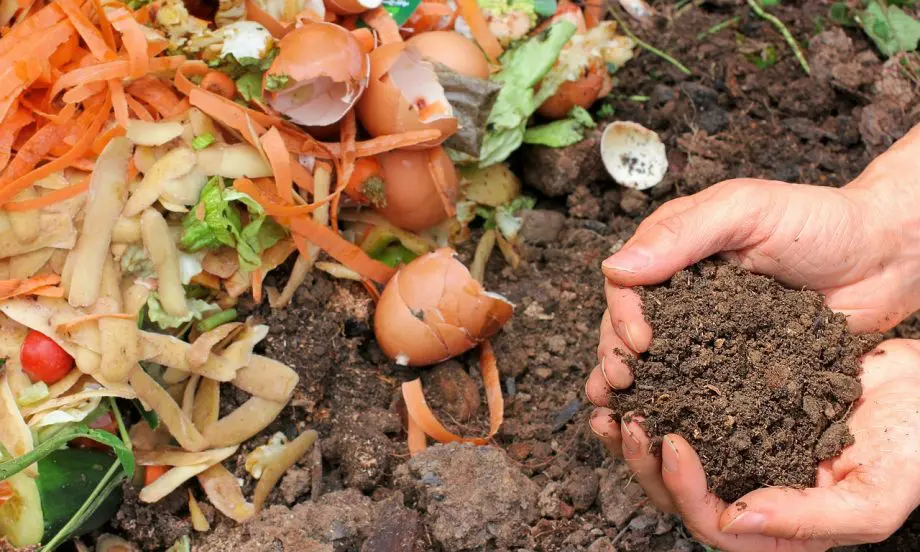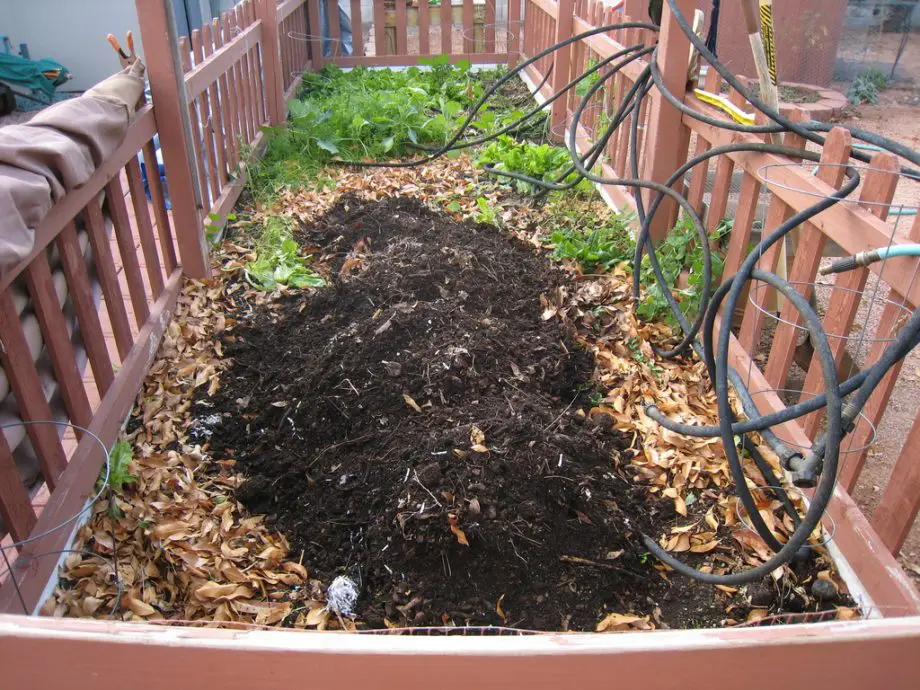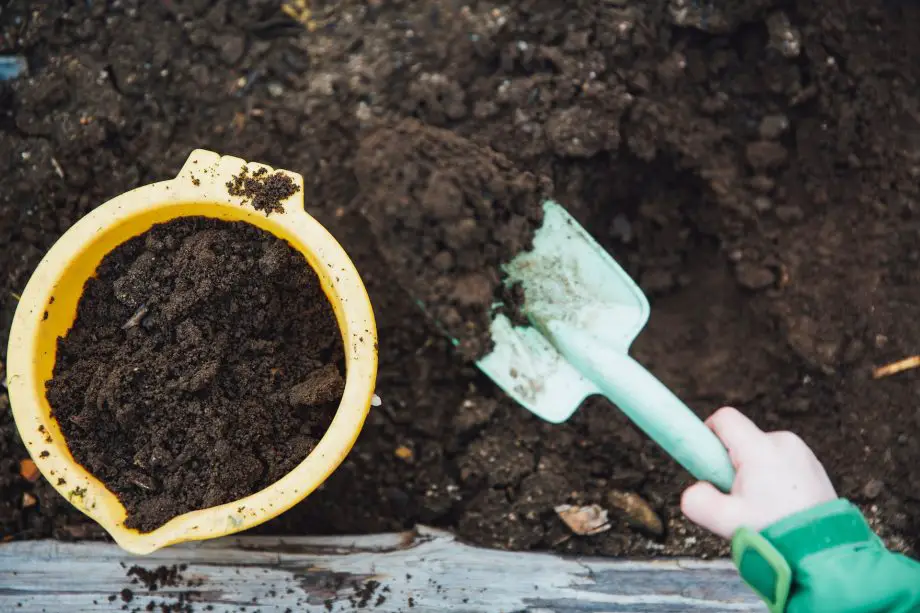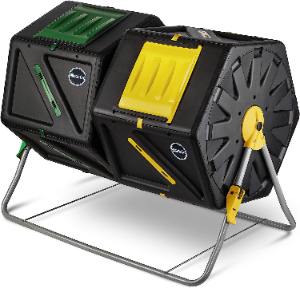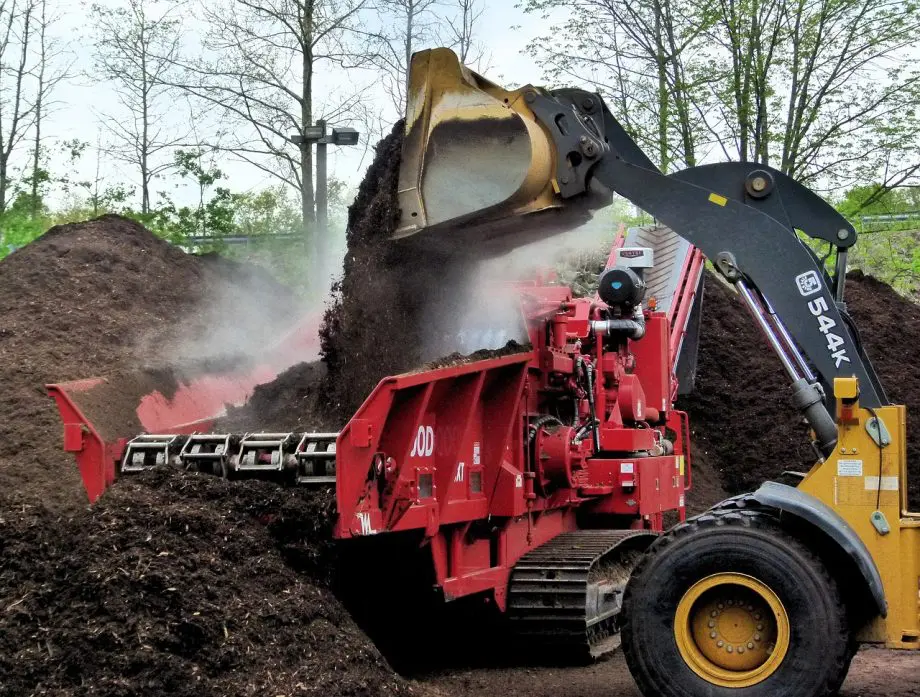
Can you compost cooked food? Dive into our comprehensive guide to learn how to turn your kitchen waste into garden gold, sustainably and efficiently.
Ever found yourself pondering, ‘Can you compost cooked food?’ while scraping leftover food off your dinner plate? You’re not alone. As we all strive to live more sustainably, understanding what we can and can’t compost becomes crucial. So, let’s dive into the world of composting and explore how your cooked food can contribute to a thriving garden instead of ending up in a landfill.
Can You Compost Cooked Food?
Have you ever wondered, ‘Can you compost cooked food?’ It’s a question that’s likely crossed the mind of anyone keen on reducing waste and boosting their garden’s health.
In this comprehensive guide, we’ll explore this topic in depth, covering everything from the types of cooked food you can compost, potential challenges, and how to do it properly.
We’ll also delve into the best food scraps for composting and the art of making a hot compost pile.
So, let’s embark on this journey to transform our kitchen leftovers into a gardener’s treasure.
Importance of Composting
Composting is more than just a trendy buzzword in the world of sustainability; it’s a practice that holds significant importance for our environment.
When we compost, we’re essentially giving back to the earth, returning essential nutrients to the soil that can help plants thrive.
But it’s not just about creating nutrient-rich soil for our gardens. Composting also plays a vital role in reducing the amount of waste that ends up in our landfills.
By composting our kitchen scraps, we can significantly cut down on the volume of trash we produce.
Plus, composting helps to reduce greenhouse gas emissions. When organic waste decomposes in a landfill, it releases methane, a potent greenhouse gas.
But when we compost, we’re controlling that process in a way that significantly reduces those emissions. So, composting is a win-win for us and the planet!
Brief Overview of Composting Cooked Food
Now, let’s talk about composting cooked food. The idea might seem a bit strange at first.
After all, most of us are familiar with composting raw fruit and vegetable scraps, but cooked food?
Yes, it’s possible, and it’s a practice that can help us reduce waste even further. However, home composting cooked food does come with its own set of challenges and considerations.
Not all cooked foods are created equal when it comes to composting, and some might attract unwanted pests or take longer to break down.
But don’t worry, we’re going to delve into all of this and more, providing you with the knowledge you need to compost cooked food effectively and responsibly.
So, let’s get started on this exciting journey toward a more sustainable kitchen!
Can Cooked Food Be Composted?

Let’s dive right into the heart of the matter: Can cooked food be composted? Can you compost cooked vegetables?
It’s a question that might have you scratching your head, especially if you’re new to the composting scene.
You might be thinking, ‘I know I can compost my apple cores and carrot peels, but what about the leftover pasta from dinner?’
Well, you’re in the right place to find out. In this section, we’re going to unravel the mystery and give you the lowdown on composting cooked food.
So, let’s roll up our sleeves and get into the nitty-gritty of turning your cooked leftovers into compost gold!
A General Rule of Composting Cooked Food
Let’s start with the basics, shall we? The general rule of composting cooked food is pretty straightforward: yes, you can compost it.
But, like most things in life, it’s not quite as simple as it sounds. You see, while cooked food is organic matter and will eventually break down, it’s not always the best choice for your composting bin.
Why, you ask? Well, it’s all about balance. Your compost pile thrives on a mix of ‘greens’ (like vegetable peels and coffee grounds) and ‘browns’ (like leaves and paper).
Cooked food, especially if it contains oil or dairy, can upset this balance and slow down the composting process.
But don’t worry, with a little know-how and careful management, you can still make it work.
Challenges of Composting Cooked Food
Now, let’s talk about the challenges. Composting cooked food isn’t always a walk in the park.
For starters, it can attract unwanted guests to your compost bin. We’re talking about pests like rats, raccoons, and flies, who are drawn to the smell of your leftover lasagna or stir-fry.
Not exactly the kind of visitors you want in your backyard, right?
Another challenge is the potential for unpleasant odors. As the cooked food breaks down, it can release some pretty strong smells, which might not make you the most popular neighbor on the block.
And finally, there’s the risk of your compost pile going anaerobic – that’s when it doesn’t get enough air and starts to smell like rotten eggs. Yuck!
But don’t let these challenges deter you. With the right strategies, you can successfully compost cooked food and contribute to a more sustainable planet.
Types of Cooked Food You Can Compost

So, you’re ready to dive into the world of composting cooked food, but you’re wondering, what types of cooked food can I actually compost?
Well, you’re in the right place! In this section, we’re going to explore the various types of cooked food that are suitable for composting.
From your leftover rice to that piece of meat you couldn’t finish, we’ll discuss how different types of cooked food can be safely and effectively added to your compost pile.
So, let’s get started and turn your kitchen scraps into garden gold!
Cooked Rice and Its Composting Considerations
Cooked rice, you ask? Absolutely! Cooked rice can be a great addition to your compost pile. It’s rich in starch, which breaks down into organic matter that enriches your compost.
But there are a few things to keep in mind. First, rice can clump together, potentially creating pockets that don’t get enough air.
To avoid this, try mixing it well with other compost materials. Also, if your rice was cooked with a lot of oil or sauce, it might attract unwanted pests. So, it’s best to compost plain cooked rice.
Composting Cooked Meat
Now, onto a slightly trickier topic of composting cooked meat. Yes, it’s possible, but it comes with its own set of challenges.
Meat is high in protein and can add valuable nutrients to your compost.
However, it can also attract pests and produce unpleasant odors as it decomposes.
If you’re composting at home, it’s best to add small amounts of meat scraps to your compost pile and ensure it’s well covered with other compost materials. This helps to minimize odors and keep pests away.
Composting Processed Food
Lastly, let’s talk about composting processed food. While it’s organic and can decompose, processed food often contains preservatives and other additives that might not be the best for your compost pile.
Plus, they can also attract pests. If you do decide to compost processed food, make sure to bury it deep within your compost pile to help speed up decomposition and reduce the chance of attracting critters.
Remember, composting is a bit of an art and a science, so don’t be afraid to experiment and see what works best for you!
Potential Issues with Composting Cooked Food
As we dive into the potential issues with composting cooked food, it’s important to remember that every good thing comes with its own set of challenges.
Composting cooked food is no different. It’s a fantastic way to reduce waste and enrich your soil, but it’s not always smooth sailing.
In this section, we’ll explore some of the common hurdles you might encounter, from pesky pests to unpleasant odors, and even the risk of anaerobic decomposition.
But don’t worry, we’ll also discuss how to navigate these issues, so you can compost cooked food with confidence. Let’s get into it!
Attracting Pests
One of the first challenges you might face when composting cooked food is the attraction of pests.
From ants to raccoons, the smell of decomposing food can be a dinner bell for a variety of critters.
It’s not uncommon to find them rummaging through your compost heap in search of a free meal.
But don’t let this discourage you. There are ways to deter these unwelcome guests, such as using a compost bin with a secure lid or burying your food scraps deep within your compost pile.
Unpleasant Odors
Next up on our list of potential issues is the production of unpleasant odors. Let’s be honest, decomposing food isn’t exactly a bouquet of roses.
Cooked food, especially meat and dairy products, can produce particularly strong smells as they break down.
This can be a bit off-putting, especially if your compost pile is near your home.
However, a well-managed compost pile should not smell bad. If it does, it’s usually a sign that something is off balance.
For instance, adding more brown materials like leaves or straw can help absorb odors and restore balance to your compost pile.
A better option might be setting up a bokashi composter for these things. Since it’s an anaerobic form of composing there are no bad smells.
Anaerobic Decomposition
Lastly, we have the issue of anaerobic decomposition. This happens when there’s not enough oxygen in your compost pile, often due to over-saturation or lack of aeration.
When compost goes anaerobic, it can slow down the decomposition process and lead to the production of methane, a potent greenhouse gas.
Plus, it can make your compost pile smell like a swamp. To avoid this, make sure your compost pile is well-aerated by turning it regularly.
Also, be mindful of the moisture level in your compost pile. It should be damp, but not waterlogged.
Remember, these challenges are all part of the composting journey.
With a bit of knowledge and some proactive management, you can successfully compost cooked food and reap the rewards of rich, nutrient-dense compost for your garden.
How to Compost Cooked Food Properly
Alright, let’s roll up our sleeves and get down to the business of composting cooked food properly.
It’s not as daunting as it might seem, and with a little know-how, you’ll be turning your kitchen scraps into garden gold in no time.
In this section, we’ll walk you through the steps to compost cooked food effectively, from choosing the right compost bin to mastering the art of layering your compost pile.
We’ll also share some handy tips to help you navigate potential challenges along the way.
So, are you ready to take your composting game to the next level? Let’s get started!
Tips for Composting Cooked Food
Composting cooked food can be a bit tricky, but with the right approach, it’s entirely doable. Here are some tips to help you get started:
Balance Your Compost: Remember, composting is all about balance. You need a good mix of ‘greens’ (nitrogen-rich materials like vegetable peels) and ‘browns’ (carbon-rich materials like dry leaves or newspaper).
Cooked food, especially if it contains meat or dairy, is very high in nitrogen, so you’ll need to add plenty of browns to keep your compost balanced.
Bury Your Cooked Food: To avoid attracting pests, bury your cooked food scraps in the middle of your compost pile.
This will also speed up the decomposition process.
Keep It Small: Chop your cooked food scraps into small pieces to help them break down faster.
Importance of Aeration and Maintenance
Aeration is crucial in composting. It helps speed up the decomposition process and prevents your compost pile from developing an unpleasant smell.
Here’s how to ensure proper aeration:
Turn Your Compost: Regularly turning your compost pile helps to aerate it, speeding up decomposition and preventing unpleasant odors. Aim to turn your compost pile once a week.
Use a Compost Aerator: A compost aerator is a tool that you can use to easily turn and aerate your compost pile. It’s especially useful if you have a large compost pile.
Maintenance is also key in composting: This includes regularly adding new materials, turning the compost pile, and ensuring it has the right moisture level.
A well-maintained compost pile will decompose faster and produce better-quality compost.
What Food Scraps Are Good for Compost?
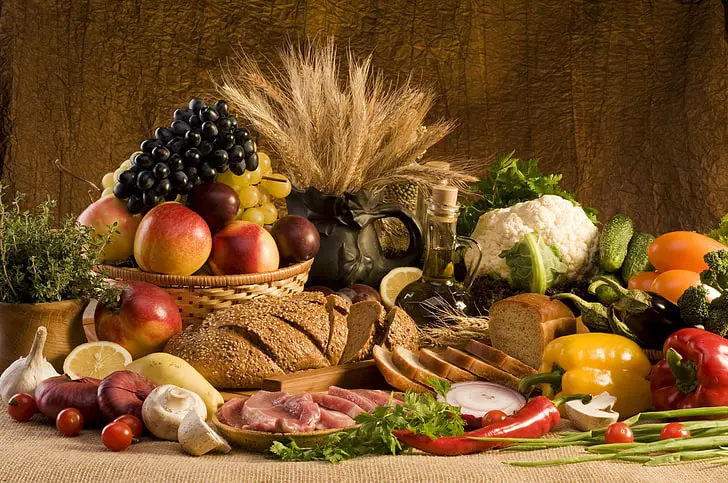
Welcome to the next chapter of our composting journey! Now that we’ve delved into the world of composting cooked food, let’s broaden our horizons a bit.
In this section, we’re going to explore the wide variety of food scraps that can be turned into nutrient-rich compost.
From the usual suspects like fruit and vegetable peels to the more surprising additions, we’ll uncover the do’s and don’ts of composting food scraps.
So, let’s dive in and discover how your kitchen waste can give your garden a boost!
List of Compostable Food Scraps
Let’s start our exploration with a treasure trove of compostable food scraps.
You’ll be amazed at the variety of kitchen waste that can be transformed into garden gold!
Fruit and vegetable peels, coffee grounds, tea bags, eggshells, and even stale bread can all be composted.
These items are rich in nutrients and help create a balanced compost pile.
Remember, the more diverse your compost ingredients, the richer the final product will be.
So next time you’re peeling potatoes or finishing a pot of coffee, think twice before tossing those scraps in the trash!
Here’s a list of common compostable food scraps:
• Fruit and vegetable peels and scraps
• Coffee grounds and filters
• Tea bags (ensure they are not made of synthetic materials)
• Eggshells (crushed)
• Nut shells (except walnut shells, which can be toxic to some plants)
• Corn cobs and husks
• Old herbs and spices
• Stale bread and grains
• Old pasta (without sauce)
• Rice (cooked or uncooked)
• Cereal
• Wine corks (natural ones, not synthetic)
• Avocado pits (crushed)
• Old jelly, jam, or preserves
• Outdated boxed foods from the pantry
• Popcorn kernels (unpopped)
• Seaweed and kelp
• Tofu and soy products
• Old condiments (ketchup, mustard, etc.)
Remember, it’s important to balance these green materials, which are high in nitrogen, with brown materials, like dried leaves, straw, or shredded newspaper, which are high in carbon.
This balance helps your compost pile decompose effectively.
Items to Avoid in Compost
Now, while it’s exciting to realize how many food scraps can be composted, it’s equally important to know what to avoid.
Some items might seem compostable but can cause problems. For instance, dairy products, cooked or raw meat, and oily foods can attract pests and create unpleasant odors.
Similarly, diseased plants and weeds with seeds can spread issues to your garden when composted.
And let’s not forget about non-biodegradable items like plastic and glass. These items won’t break down and can contaminate your compost.
So, while we’re all for reducing waste, remember that not all kitchen scraps belong in the compost pile.
A bokashi bin is a great way to compost meat and dairy products. A bokashi system is an anaerobic (without oxygen) compost method that ferments these food scraps.
How to Make Hot Compost
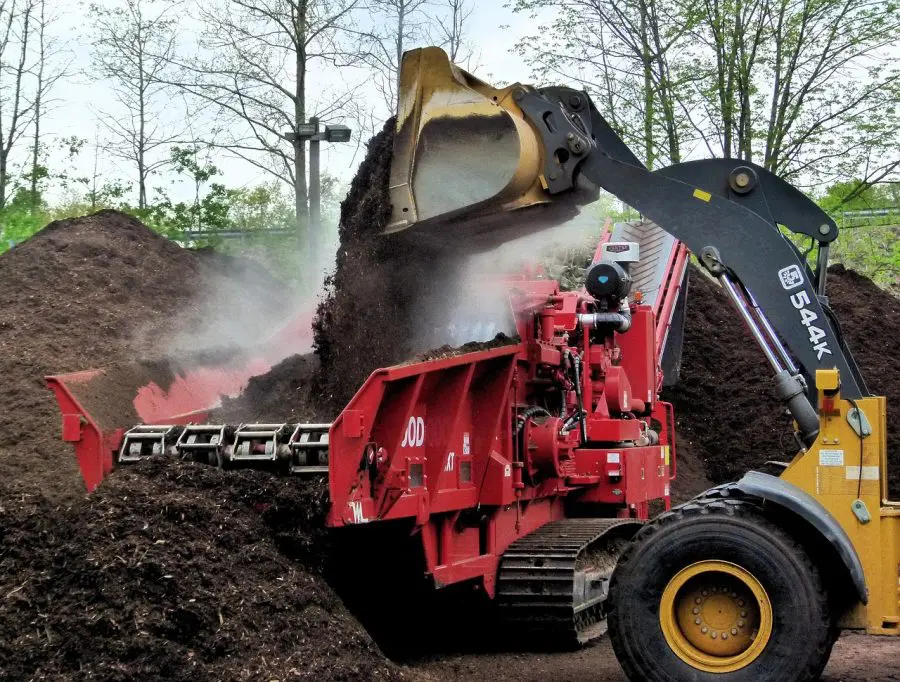
Welcome to the exciting world of hot composting! Now, you might be wondering, What’s hot composting, and how is it different from regular composting?
Well, hot composting is like the fast track to rich, fertile compost. It’s a method that, with a bit of extra attention and care, can turn your kitchen scraps and yard waste into nutrient-packed compost in a matter of weeks, not months.
An advantage of the compost temperatures in a hot pile is that it can kill weed seeds and any harmful bacteria.
In this section, we’ll guide you through the steps of hot composting, from setting up your compost pile to knowing when it’s ready to use.
So, let’s dive in and turn up the heat on your composting game!
Steps to Make Hot Compost
Hot composting is like a well-choreographed dance, where each step is crucial to the overall performance. Let’s break down the steps:
- Start with a Layer of Browns: Begin your compost pile with a layer of browns, which are carbon-rich materials like dried leaves, straw, or shredded newspaper. This layer serves as the foundation of your compost pile.
- Add a Layer of Greens: Next, add a layer of greens, which are nitrogen-rich materials like vegetable scraps, coffee grounds, or fresh grass clippings. These materials kickstart the composting process by providing food for the microorganisms that do the heavy lifting.
- Water Each Layer: After each layer, lightly water your compost pile. The moisture helps the microorganisms thrive and speeds up the composting process.
- Repeat the Layers: Continue alternating between layers of browns and greens, watering each layer as you go. Aim for a pile that’s at least 3 feet high to generate enough heat for hot composting.
- Turn the Pile: About once a week, turn your compost pile with a pitchfork or shovel. This introduces oxygen into the pile, which is essential for the microorganisms.
- Monitor the Temperature: Use a compost thermometer to monitor the temperature of your pile. It should heat up to between 130 and 160 degrees Fahrenheit. This heat helps to break down the materials and kill any weed seeds or pathogens.
- Wait and Use: Once the pile cools down and the materials have broken down into rich, dark compost, it’s ready to use in your garden!
Importance of the Right Mix of Green and Brown Materials
The secret sauce of successful composting is the right mix of green and brown materials.
Think of greens as the main course for the microorganisms in your compost pile. They’re rich in nitrogen and break down quickly, providing a burst of energy.
On the other hand, browns are like desserts. They’re high in carbon and break down more slowly, providing a steady release of energy over time.
Getting the right balance between greens and browns is crucial. Too many greens and your compost pile can become smelly and slimy.
Too many browns and the composting process can take forever.
A good rule of thumb is to aim for a ratio of 2:1 browns to greens by volume.
This balance ensures a healthy, efficient composting process that produces nutrient-rich compost for your garden.
Use a compost tumbler to speed up the process
Using a compost tumbler can speed up the composting process!
I think a tumbling composter is the best way to make compost fast. And it is an easy way to make compost.
It’s much faster than a traditional compost bin or heap. Plus it’s neater looking and sealed to keep out pests.
A compost tumbler is a fully sealed container that can be rotated to mix the composting materials.
Here’s how you can use it:
Fill the Tumbler: Start by adding a mix of green and brown materials to the compost tumbler.
Remember, you’re aiming for a 2:1 ratio of browns to greens. Browns can be things like dried leaves or shredded newspaper or other paper products like cardboard, while greens can be items like vegetable scraps or coffee grounds.
Add Water: If your materials are dry, add some water to the tumbler. You want the materials to be as damp as a wrung-out sponge.
Rotate Regularly: Here’s where the tumbler shines. Rotate the tumbler every few days to mix the materials and introduce oxygen.
This is much easier than turning a traditional compost pile with a pitchfork or shovel!
Monitor the Process: Keep an eye on your compost. It should heat up as the materials decompose. If it starts to smell bad, add more browns to balance out the greens.
Harvest Your Compost: After a few weeks, you should have rich, dark compost ready to use in your garden.
The exact time will depend on the materials you used and the weather conditions, but a tumbler can produce compost in as little as 2-3 weeks.
Remember, even with a compost tumbler, the key to successful composting is the right mix of materials.
Too many greens can make the compost wet and smelly, while too many browns can slow down the composting process.
But with the right balance, a compost tumbler can help you produce nutrient-rich compost in no time!
FAQs
Let’s dive into some of the most frequently asked questions about composting cooked food. You’ve got questions, we’ve got answers!
Whether you’re a seasoned composter or a newbie just starting out, there’s always something new to learn.
From the nitty-gritty details of composting different types of cooked food to troubleshooting common composting issues, we’re here to help you navigate the wonderful world of composting.
So, let’s get those burning questions answered, shall we?
Q: What is a compost starter?
A: A compost starter, also known as a compost activator, is a product that kick-starts the composting process.
It’s packed with microorganisms that help break down organic material faster.
Think of it as a catalyst that speeds up the natural decomposition process!
Q: How long does it take to make compost?
A: The time it takes to make compost can vary greatly depending on several factors such as the materials you’re composting, the size of your compost pile, the weather, and how often you turn the compost.
Generally, it can take anywhere from 2 months to a year. But don’t worry, the end result is worth the wait!
Q: How much space do I need to make compost?
A: The amount of space needed for composting depends on how much waste you generate.
A small compost bin or tumbler may be enough for a small household or apartment with limited outdoor space.
However, if you have a large garden and generate large quantities of kitchen and yard waste, you might need a larger compost pile or multiple bins.
As a general rule, a compost pile should be at least 3 feet wide, 3 feet long, and 3 feet high to work efficiently.
Conclusion

As we wrap up our deep dive into the world of composting cooked food, it’s clear that this practice is more than just a trend.
It’s a sustainable, rewarding, and surprisingly simple way to reduce waste and enrich our gardens.
We’ve journeyed through the ins and outs of composting, from the types of cooked food you can compost to the potential challenges and how to overcome them.
We’ve also explored the art of making hot compost and answered some of your burning questions.
So, whether you’re a seasoned composter or just starting out, remember, every bit of effort counts towards a greener planet. Let’s keep the composting conversation going!
Recap of Key Points
As we bring our composting journey to a close, let’s take a moment to reflect on the key takeaways.
We’ve learned that composting cooked food is not only possible, but it can also be a game-changer for our gardens and our planet.
From understanding the general rules and challenges of composting cooked food to exploring the types of cooked food that are compost-friendly, we’ve covered a lot of ground.
We’ve also delved into the potential issues that can arise when composting cooked food and how to navigate them.
And let’s not forget the importance of aeration and maintenance, as well as knowing what food scraps are good for compost.
Encouragement for Readers to Start Composting Cooked Food
Now that you’re armed with all this knowledge, why not give composting cooked food a try?
It might seem a bit daunting at first, but remember, every journey begins with a single step.
And this is a journey that leads to a healthier planet and a more sustainable lifestyle.
So, go ahead, roll up your sleeves and start turning those leftovers into garden gold. You’ve got this!



